Choosing Between WD Red and Seagate Ironwolf HDDs in Your NAS
In late 2025, choosing between Seagate IronWolf and WD Red for a NAS is less about raw performance and more about secondary factors such as noise, power consumption, pricing, and ecosystem. Both brands now offer broadly similar SATA performance in their mainstream and Pro lines once you reach 7200 RPM, 256 MB cache, and CMR recording, and both quote comparable workload ratings and multi bay support for NAS use. Durability claims in MTBF, workload per year, and 24 by 7 operation are also effectively at parity on paper, and the underlying engineering around vibration control, error recovery, and NAS specific firmware has converged to a large extent. Where meaningful technical differences still exist is in the maximum capacities on offer and how they are positioned. Seagate currently leads on headline capacity in the NAS tier with IronWolf Pro drives up to 30 TB, while WD Red Pro tops out slightly lower but overlaps most of the mainstream size points that home and small business users are likely to deploy. As a result, the decision for many buyers is less about which brand is objectively better and more about how each behaves in real deployments in terms of acoustics, energy use, long term running costs, warranty extras such as bundled recovery services, and regional pricing patterns at specific capacities.
Across the HDD industry in 2024 and early 2025, Western Digital and Seagate remain closely matched, with Western Digital holding a slight lead by several common measures. Public breakdowns of exabytes shipped in 2024 put Western Digital at roughly 38.6 percent of HDD capacity shipped worldwide, Seagate at about 37 percent, and Toshiba at around 24.4 percent, confirming that the market is effectively a 2 vendor race with a smaller but still significant third player. Although the exact percentages vary depending on whether you look at units, capacity, or revenue, the pattern is consistent, with Western Digital marginally ahead and Seagate following closely behind.
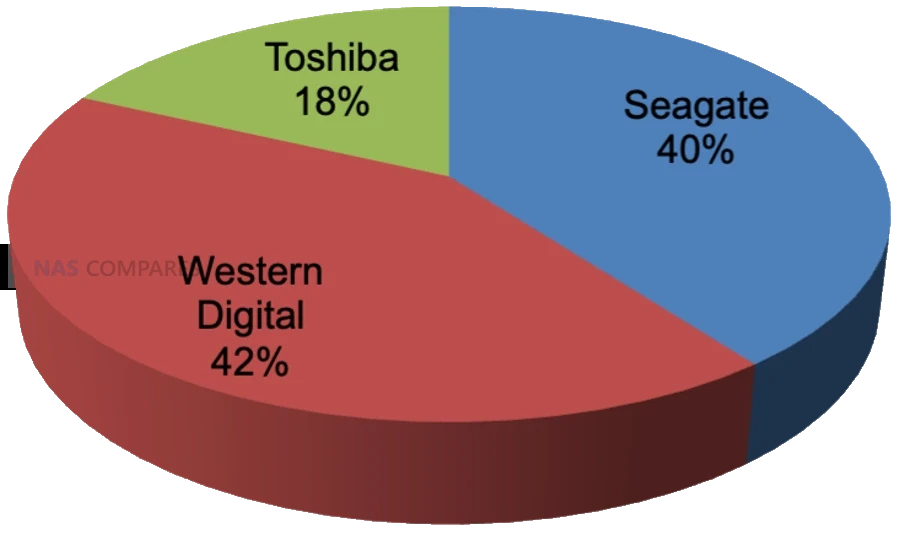
Recent industry and financial reporting also shows Western Digital gaining momentum in high capacity nearline drives, particularly in data center and cloud deployments, with disk based revenue and shipped capacity outpacing Seagate in at least some recent quarters. At the same time, Seagate retains a leadership position in very large capacity models, including 30 TB HAMR based NAS and nearline drives that are already commercially available and aimed at the same high density markets.
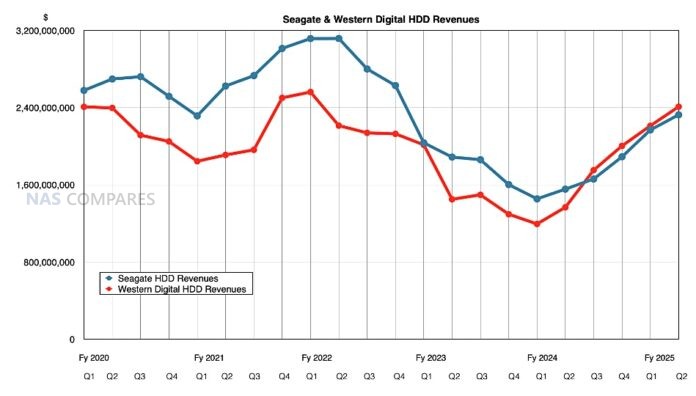
Taken together, these data points indicate a tightly contested landscape where Western Digital currently leads in overall shipped capacity and revenue, while Seagate pushes the capacity envelope and remains highly competitive in large scale deployments.
Seagate Ironwolf vs WD Red NAS Hard Drives – Price
In late 2025 there is a clear pattern in how Seagate and WD position their HDDs on price, even if individual deals move around constantly. In general Seagate tends to be slightly cheaper per terabyte across many mainstream retailers and regions, particularly for larger 16 TB to 24 TB IronWolf and Exos capacities. WD pricing is often a little higher at like for like capacity in third party channels, especially for newer Red Plus and Red Pro models, although temporary sales can narrow or reverse this gap. Both brands are heavily discounted during seasonal events, so headline price screenshots are only ever a snapshot rather than a permanent rule.

Where WD changes the picture is through its own direct store. WD sells Red, Red Plus and Red Pro drives through its retail site and often undercuts third party resellers by a noticeable margin, especially during promotions. That means in some regions the cheapest way to buy WD is directly from WD, while Seagate relies entirely on partner channels and keeps relatively steady discounting through Amazon and similar outlets. As a result it is common to see Seagate come out cheaper in most general marketplaces while WD can be the lowest price only on its own store, which is not available in every country.
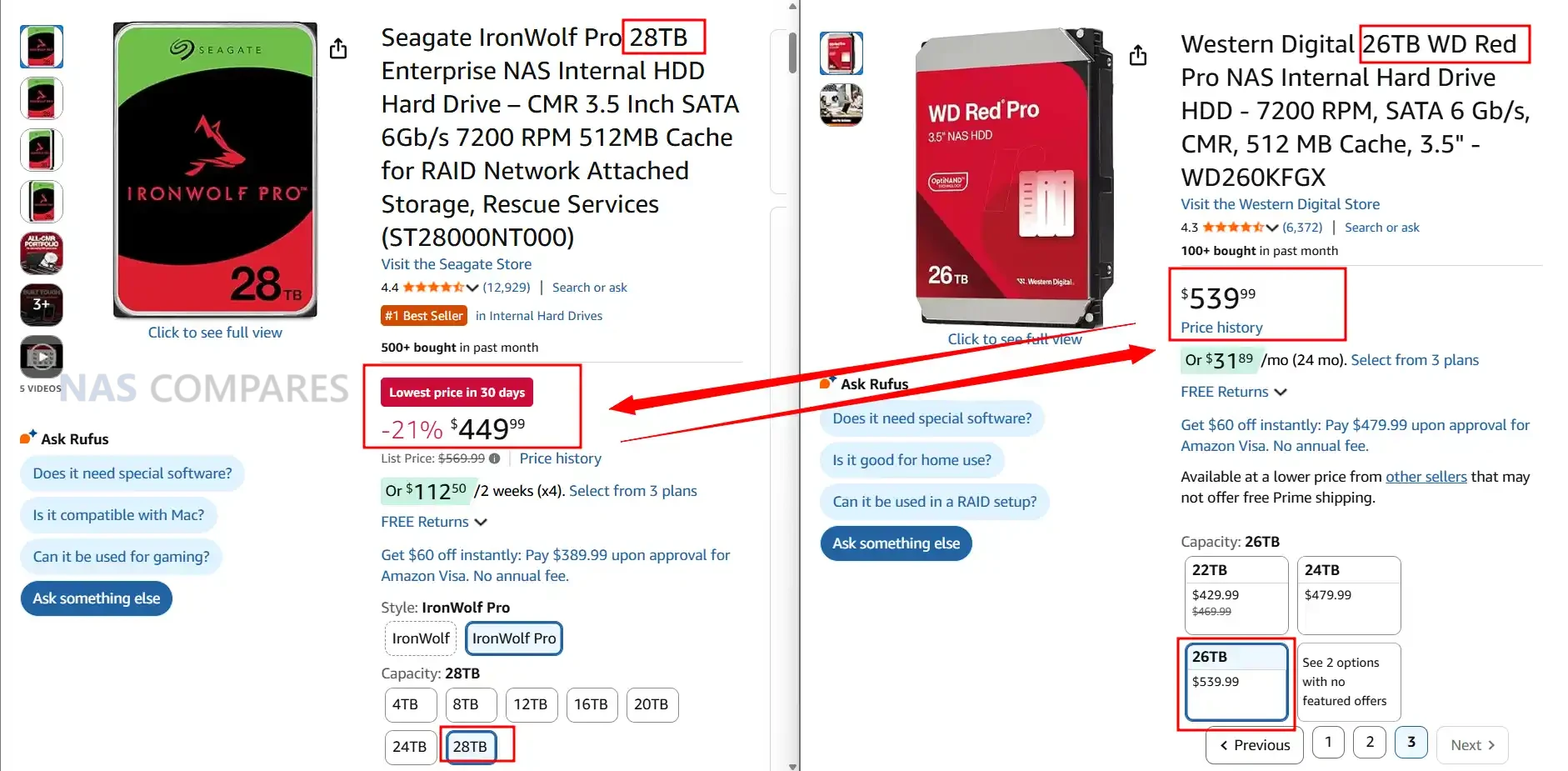
Once you move up into Pro and nearline class drives, such as IronWolf Pro versus WD Red Pro or WD Gold, pricing becomes more fragmented. Seagate keeps a fairly consistent capacity step pricing model where higher capacities scale in a relatively predictable way. WD on the other hand often runs multiple Red Pro and enterprise SKUs at the same capacity with different cache sizes or internal designs, which leads to overlapping prices and large swings between models that appear similar on paper. In practice this means that at the Pro tier Seagate is usually easier to price compare, while WD may offer good value on specific model IDs or capacities but requires more careful checking of part numbers and current discounts before purchase.
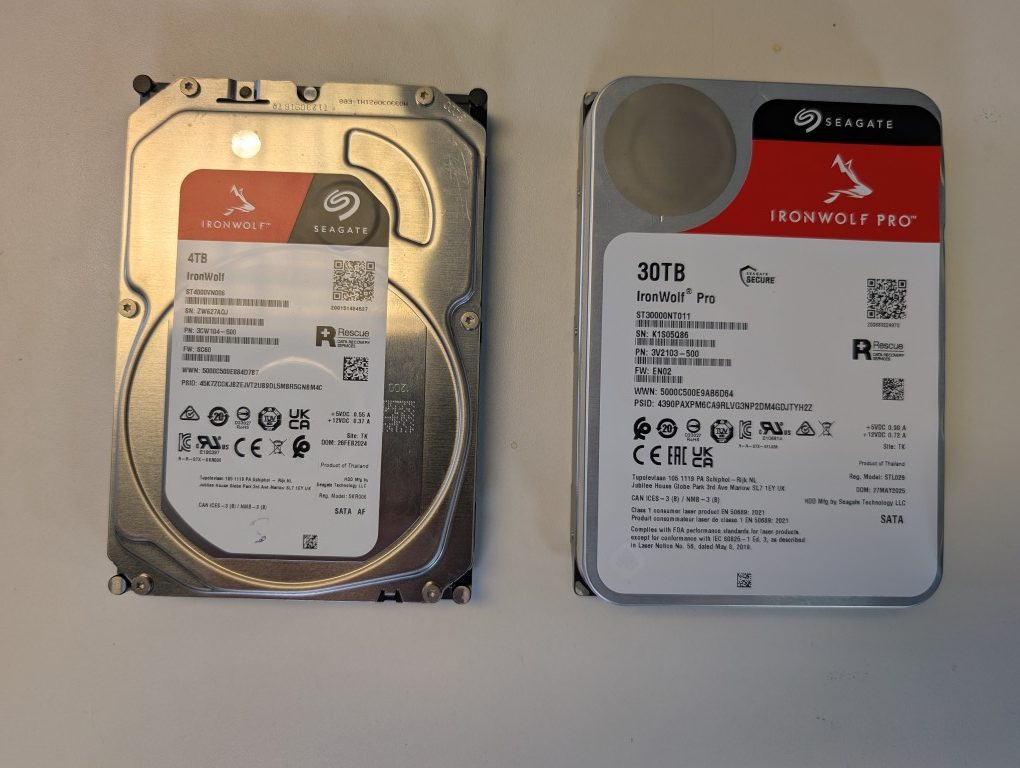
Seagate Ironwolf vs WD Red – Noise Level Comparison
| Capacity | Idle Seagate Ironwolf | Idle WD Red Plus | Idle Winner | Seek Seagate Ironwolf Pro | Seek WD Red Pro | Seek Winner |
|---|---|---|---|---|---|---|
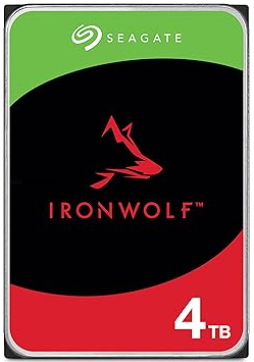 |
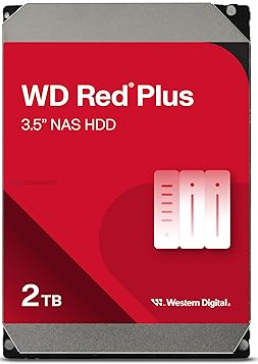 |
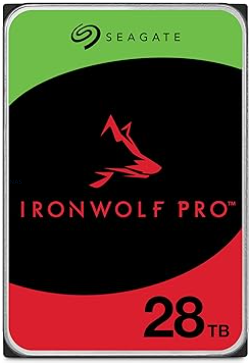 |
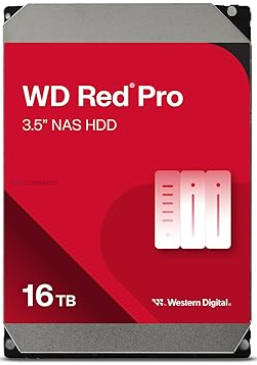 |
|||
| 30TB | 28 dBA (ST30000NT011) | no WD equivalent | Seagate | 32 dBA (ST30000NT011) | no WD equivalent | Seagate |
| 28TB | 28 dBA (ST28000NT000) | 25 dBA (WD281KFGX) | WD | 32 dBA (ST28000NT000) | 32 dBA (WD281KFGX) | Tie |
| 26TB | no Seagate model | 25 dBA (WD260KFGX) | WD | no Seagate model | 32 dBA (WD260KFGX) | WD |
| 24TB | 28 dBA (ST24000NT002) | 25 dBA (WD241KFGX), 20 dBA (WD240KFGX) | WD | 26 dBA (ST24000NT002) | 32 dBA (WD241KFGX), 32 dBA (WD240KFGX) | Seagate |
| 22TB | 28 dBA (ST22000NT001) | 32 dBA (WD221KFGX) | WD | 26 dBA (ST22000NT001) | 32 dBA (WD221KFGX) | Seagate |
| 20TB | 28 dBA (ST20000NT001) | 20 dBA (WD202KFGX, WD201KFGX) | WD | 26 dBA (ST20000NT001) | 32 dBA (WD202KFGX, WD201KFGX) | Seagate |
| 18TB | 28 dBA (ST18000NT001) | 20 dBA (WD181KFGX) | WD | 26 dBA (ST18000NT001) | 36 dBA (WD181KFGX) | Seagate |
| 16TB | 28 dBA (ST16000NT001) | 20 dBA (WD161KFGX) | WD | 26 dBA (ST16000NT001) | 36 dBA (WD161KFGX) | Seagate |
| 14TB | 20 dBA (ST14000NT001) | 20 dBA (WD142KFGX), 20 dBA (WD141KFGX) | Tie | 26 dBA (ST14000NT001) | 36 dBA (WD142KFGX), 36 dBA (WD141KFGX) | Seagate |
| 12TB | 28 dBA (ST12000NT001) | 20 dBA (WD121KFBX), 34 dBA (WD122KFBX) | WD | 26 dBA (ST12000NT001) | 36 dBA (WD121KFBX), 39 dBA (WD122KFBX) | Seagate |
| 10TB | 28 dBA (ST10000NT001) | 20 dBA (WD102KFBX), 34 dBA (WD103KFBX) | WD | 30 dBA (ST10000NT001) | 36 dBA (WD102KFBX), 39 dBA (WD103KFBX) | Seagate |
| 8TB | 28 dBA (ST8000NT001) | 20 dBA (WD8003FFBX, WD8005FFBX) | WD | 30 dBA (ST8000NT001) | 36 dBA (WD8003FFBX, WD8005FFBX) | Seagate |
| 6TB | 28 dBA (ST6000NT001) | 21 dBA (WD6003FFBX, WD6005FFBX) | WD | 30 dBA (ST6000NT001) | 36 dBA (WD6003FFBX, WD6005FFBX) | Seagate |
| 4TB | 28 dBA (ST4000NT001) | 20 dBA (WD4003FFBX), 29 dBA (WD4005FFBX) | WD | 30 dBA (ST4000NT001) | 36 dBA (WD4003FFBX, WD4005FFBX) | Seagate |
| 2TB | 28 dBA (ST2000NT001) | 21 dBA (WD2002FFSX) | WD | 30 dBA (ST2000NT001) | 31 dBA (WD2002FFSX) | Seagate |
The difference becomes more apparent once you move beyond a simple 1 or 2 bay NAS and start populating 4, 6 or 8 bay chassis. Multiple Seagate drives running together produce a slightly harsher mechanical sound profile, with more pronounced click and clunk patterns during head movements, as well as higher cumulative vibration. WD drives, particularly Red Plus and most of the more recent Red Pro helium models, lean toward a smoother background hum with less sharp seek noise and lower ambient vibration. For users placing a NAS in a living room, bedroom or under a desk, this cumulative effect can be significant, even if each individual drive only differs by a couple of dBA on paper.
It is worth noting that not every capacity behaves identically. Lower capacities and some air filled WD Red Plus models idle very quietly and can be comparable with the quietest Seagate SKUs, while some high capacity Red Pro variants with 7200 RPM motors and larger caches approach IronWolf Pro levels of seek noise. However, when you average across the current CMR product stacks in late 2025, WD holds a small but consistent advantage in both idle and seek acoustics, especially in multi bay deployments where background noise and vibration build up over time.
Seagate Ironwolf vs WD Red – Power Consumption (Idle / Active)
Looking purely at spec sheets, both Seagate and WD publish idle and seek values that cluster in similar bands, typically around the low 20 dBA range at idle and high 20 to mid 30 dBA under seek as capacities and spindle speeds rise. In practice though, the character of the noise differs between the brands. IronWolf and IronWolf Pro models tend to produce a sharper mechanical click pattern during head seeks and a more noticeable spin up profile, while WD Red Plus and Red Pro lines usually present as a smoother hum with less abrupt transitions between idle and active states. In a quiet room this difference in tone can matter as much as the numeric dBA rating itself.
| Capacity | Idle Seagate Ironwolf | Idle WD Red Plus | Idle Winner | Active Seagate Ironwolf Pro | Active WD Red Pro | Active Winner |
|---|---|---|---|---|---|---|
 |
 |
 |
 |
|||
| 30TB | 6.8W (ST30000NT011) | no WD equivalent | Seagate | 8.3W (ST30000NT011) | no WD equivalent | Seagate |
| 28TB | 6.8W (ST28000NT000) | 3.6W (WD281KFGX) | WD | 8.3W (ST28000NT000) | 6.0W (WD281KFGX) | WD |
| 26TB | no Seagate model | 3.6W (WD260KFGX) | WD | no Seagate model | 6.0W (WD260KFGX) | WD |
| 24TB | 6.3W (ST24000NT002) | 3.6W (WD241KFGX), 3.9W (WD240KFGX) | WD | 7.8W (ST24000NT002) | 6.0W (WD241KFGX), 6.4W (WD240KFGX) | WD |
| 22TB | 6.0W (ST22000NT001) | 3.4W (WD221KFGX) | WD | 7.9W (ST22000NT001) | 6.8W (WD221KFGX) | WD |
| 20TB | 5.7W (ST20000NT001) | 2.8W (WD202KFGX), 3.6W (WD201KFGX) | WD | 7.7W (ST20000NT001) | 6.1W (WD202KFGX), 6.9W (WD201KFGX) | WD |
| 18TB | 5.0W (ST18000NT001) | 3.0W (WD181KFGX) | WD | 7.5W (ST18000NT001) | 3.6W (WD181KFGX) | WD |
| 16TB | 5.0W (ST16000NT001) | 3.6W (WD161KFGX) | WD | 7.6W (ST16000NT001) | 6.1W (WD161KFGX) | WD |
| 14TB | 5.0W (ST14000NT001) | 3.0W (WD141KFGX), 3.6W (WD142KFGX) | WD | 7.6W (ST14000NT001) | 3.0W (WD141KFGX), 6.4W (WD142KFGX) | WD |
| 12TB | 5.0W (ST12000NT001) | 2.8W (WD121KFBX), 6.1W (WD122KFBX) | WD | 7.6W (ST12000NT001) | 2.8W (WD121KFBX), 8.8W (WD122KFBX) | WD |
| 10TB | 7.8W (ST10000NT001) | 2.9W (WD102KFBX), 3.0W (WD103KFBX) | WD | 10.1W (ST10000NT001) | 4.6W (WD101KFBX), 6.1W (WD103KFBX) | WD |
| 8TB | 7.8W (ST8000NT001) | 4.0W (WD8003FFBX), 4.9W (WD8005FFBX) | WD | 10.1W (ST8000NT001) | 4.6W (WD8003FFBX), 6.9W (WD8005FFBX) | WD |
| 6TB | 7.1W (ST6000NT001) | 3.7W (WD6003FFBX), 4.0W (WD6005FFBX) | WD | 9.3W (ST6000NT001) | 3.7W (WD6003FFBX), 6.9W (WD6005FFBX) | WD |
| 4TB | 7.8W (ST4000NT001) | 3.7W (WD4003FFBX), 4.0W (WD4005FFBX) | WD | 8.7W (ST4000NT001) | 3.7W (WD4003FFBX), 5.8W (WD4005FFBX) | WD |
| 2TB | 6.7W (ST2000NT001) | 6.0W (WD2002FFSX) | WD | 6.7W (ST2000NT001) | 7.8W (WD2002FFSX) | Seagate |
At lower capacities, especially in the 2 TB to 6 TB range where air filled designs and lower spindle speeds are common, WD Red Plus models are often among the quietest options, with idle noise figures that sit at the lower end of the published spectrum and relatively soft seek sounds. Seagate standard IronWolf drives in these capacities are not especially loud by absolute numbers, but they generally sit slightly higher at idle and under random activity. Once you move into high capacity Pro class drives, WD Red Pro and IronWolf Pro become more comparable, although WD still often maintains a small advantage in idle noise on the newest helium filled models, while seek noise can be quite close on some capacities.
Noise differences increase as you add more bays and drives. A 2 bay or 4 bay NAS with mixed workloads may only expose a modest gap in acoustic behaviour between the brands, but 8 bay and larger systems can amplify any small variations. Multiple Seagate drives seeking at once will create more noticeable cumulative chatter and vibration inside a metal chassis, which can transfer into desks or shelving if the NAS is not well isolated. WD units with otherwise similar specifications and workload ratings usually generate less overall vibration, so the aggregate sound from a populated chassis can be easier to live with in shared spaces.
 |
 |
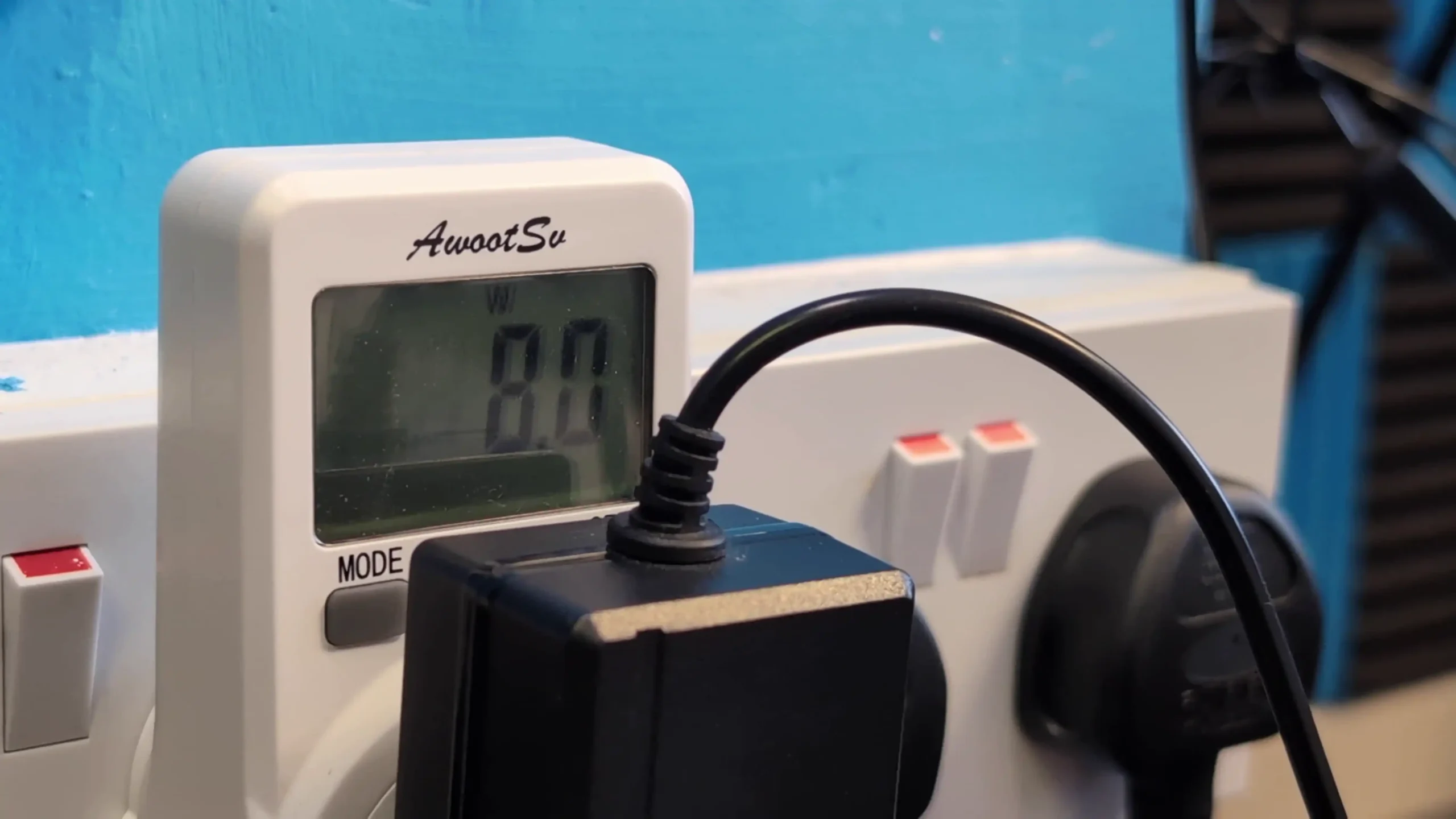 |
|
For users planning deployments in noise sensitive environments, such as a living room media setup or a small office where the NAS will sit in the same room as desks, these differences can be a factor in the buying decision once capacity and performance requirements are defined. Seagate remains attractive where price per terabyte and maximum capacity are the main priorities, and users are able to position the NAS in a cupboard, loft or separate room. WD drives typically suit scenarios where the system will remain close to people for long periods, sacrificing a small amount of price advantage in favour of lower background noise and a slightly less intrusive acoustic profile at both idle and under sustained activity.
Seagate Ironwolf vs WD Red – Verdict & Conclusion
From a technical perspective Seagate and WD now sit very close to one another in most core HDD metrics, particularly in the NAS focused IronWolf, IronWolf Pro, Red Plus and Red Pro ranges. Both brands use CMR recording on their NAS lines, have comparable workload ratings in each class, and converge around similar sustained transfer rates once you reach 7200 RPM and larger cache sizes. The main structural differences are that Seagate currently pushes higher maximum capacities into the consumer and prosumer space and includes bundled rescue data recovery on many NAS models, while WD tends to retain a small advantage in power consumption and acoustic behaviour at equivalent capacities, especially in multi bay systems. Historical issues such as WD Red SMR drives and Seagate high failure rate models at specific points in time are still relevant for older stock, but the current generation NAS ranges for both vendors are broadly aligned in specification and intended workload.
In practical terms the choice between Seagate IronWolf and WD Red often comes down to priority order rather than any single clear winner. Users aiming for the lowest cost per terabyte and the highest capacities available in the near term will usually find Seagate more attractive, particularly in larger IronWolf Pro and Exos class drives, accepting higher power draw and a more noticeable acoustic profile. Users who are sensitive to noise, want marginally lower long term energy usage or prefer WD’s clearer product segmentation may gravitate toward Red Plus or Red Pro, taking care to select the correct CMR models and capacities. In all cases the decision should be made at model level using current datasheets and pricing, not just brand reputation, and should be paired with a sensible RAID plan and an independent backup strategy, since neither vendor can remove the fundamental risk that any individual hard drive can fail.
| Idle Seagate Ironwolf | Idle WD Red Plus | Active Seagate Ironwolf Pro | Active WD Red Pro |
|---|---|---|---|
 |
 |
 |
 |
 |
 |
 |
 |
 |
 |
 |
 |
📧 SUBSCRIBE TO OUR NEWSLETTER 🔔 This description contains links to Amazon. These links will take you to some of the products mentioned in today's content. As an Amazon Associate, I earn from qualifying purchases. Visit the NASCompares Deal Finder to find the best place to buy this device in your region, based on Service, Support and Reputation - Just Search for your NAS Drive in the Box Below
🔒 Join Inner Circle
Get an alert every time something gets added to this specific article!
Need Advice on Data Storage from an Expert?
Finally, for free advice about your setup, just leave a message in the comments below here at NASCompares.com and we will get back to you.
 Need Help?
Where possible (and where appropriate) please provide as much information about your requirements, as then I can arrange the best answer and solution to your needs. Do not worry about your e-mail address being required, it will NOT be used in a mailing list and will NOT be used in any way other than to respond to your enquiry.
Need Help?
Where possible (and where appropriate) please provide as much information about your requirements, as then I can arrange the best answer and solution to your needs. Do not worry about your e-mail address being required, it will NOT be used in a mailing list and will NOT be used in any way other than to respond to your enquiry.
TRY CHAT
Terms and Conditions


The BEST NAS of 2025
Terramaster TOS 7 Preview - Next Gen NAS Ready?
What is QNAP Planning for 2026? Round Up of the QNAP 2025/2026 Event in London
2x 10GbE to USB4 Adapter - DO YOU NEED THIS?
New Gl.iNet Beryl 7, Comet 5G SIM KVM and Flint 3e Value Router Revealed
NEW UGREEN DXP4800 PRO and DXP4800S NAS REVEALED
Access content via Patreon or KO-FI
Discover more from NAS Compares
Subscribe to get the latest posts sent to your email.


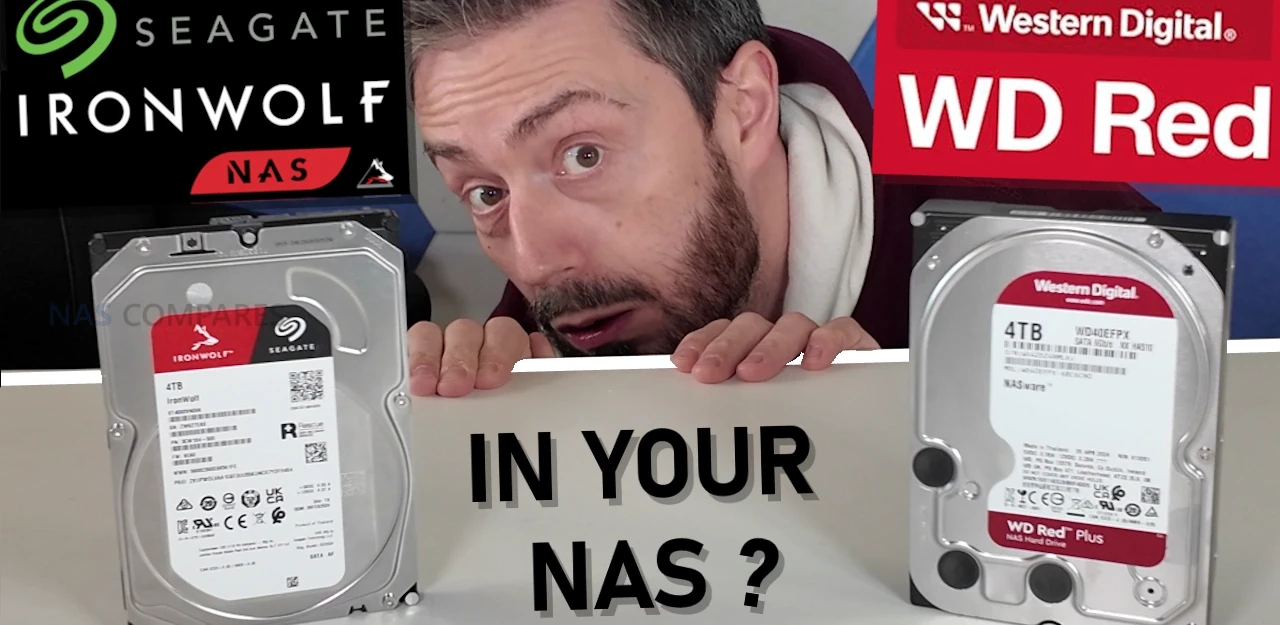



16TB drives are currently my limit for 6Gb SATA3 spinners, I like my SMART tests to finish in less than 24 hours. If you need reasonable rebuild times, going with more-but-smaller disks is the way to go. And not with BTRFS or RAID5 either. ZFS and RAIDZ2 with at least 6 disks to try and cover 2 simultaneous failures. ZFS will give you self-healing scrubs with at least a mirror. BTRFS RAID5/6 has been broken for years and I don’t trust that FS at all.
REPLY ON YOUTUBE
Thanks!
REPLY ON YOUTUBE
Imagine trying to rebuild a NAS when you always have power outages because your government is useless. So I stick to rather just having my drives in a mirror state and have those mirrored drives unplugged(offline) And just backup when I shoot a new project.
REPLY ON YOUTUBE
We reported CPU consumption on a mainframe in Euro’s and cases of beer 🙂
Anyway, you should also compare your rebuild times with an array of the same size, but with smaller (but more) drives.
I just moved a 2*20Tb raid 1 array to a ‘new’ Synology DS1821+. That worked great !
Now I’m expanding that array to a raid 5, adding 3 more 20Tb drives.
That’s going to take … 6 days … so maybe your 30Tb timings are not that bad.
Yes, it’s connected to a UPS, and the door to the room is locked …
Kind regards, Guy
REPLY ON YOUTUBE
i use my nas with raid5 as a backup and thats it, i dont have my data anywhere else. This whole thing about 3-2-1 backups its beautiful on paper but terrible to the wallet.
REPLY ON YOUTUBE
31hrs really isnt a lot of time. I bought 2 new 16TB drives and installed them in my RAID 2 weeks ago; I need to buy more drives again lol.
REPLY ON YOUTUBE
Maybe the Windows 13 installer will need 30 TB HD 🙂
REPLY ON YOUTUBE
Just ordered 2 of them to expand my 8K adult film VR collection. Super Stoked!
REPLY ON YOUTUBE
What’s crazy is that 256 TERABYTE SSD’s in the Server space are now out to purchase.
And Spinning rust is just now at 30TB.
While HDD’s have their place in Data Storage, and when they fail data can be recovered from them in the future, going forward SSD’s sure seem to be the way for RAID builds, while just physical duplication of the data seems 2b the place for Hard disks long term and for home users.
I have to start a new project and am glad that I can buy a drive today that can hold ALL the data from the project.
I can’t even say that about Backup tapes media at this point.
REPLY ON YOUTUBE
RAID6, z2, SHR2, Traid2, as these are way to big to use single redundancy
REPLY ON YOUTUBE
Love the grindr ad… or was it an hamr ad?????
REPLY ON YOUTUBE
The linear read speed hasn’t improved for 5 years. I have some 14tb exos drives that do around 270-280MB/s read write. I guess they have packed the tracks closer together on these drives but not increase the density along the tracks.
The bucket is bigger but the straw is the same size ????
REPLY ON YOUTUBE
3.5″ while floppy? Sure mate, sure ????????????
Also found 24TB new for under €250 ???? ordered 2.. don’t really need them.. but that has never stopped me and never will ????????
These big drives are ideal for a multi location synced unRAID server. Likelyhood of having the party drive die as well as a data drive at the same time are much lower, right?
REPLY ON YOUTUBE
If the whole point of having a SOHO NAS is real high availability AND disaster recovery AND peace of mind, then we have got to the point where everyone should only be buying 6+ drive bay NAS devices that support ZFS RAID-Z3 and have at least 2 SSD slots for caching.
Swallowing the cost of 3 parity drives for that peace of mind is priceless…based on my personal horror stories with a 5 bay NAS running RAID 6.
REPLY ON YOUTUBE
Shouldn’t ZFS be able to handle a power outage even during the rebuild?
REPLY ON YOUTUBE
How does WD’s OptiNAND protect against power failures during rebuild?
How big of an advantage does OptiNAND offer in general?
Because it’s really between 26TB WD Red Pro and 30TB Ironwolf Pro.
Or simply put: extra capacity vs. OptiNAND
REPLY ON YOUTUBE
I dont get it. Not even 300MB/s is just not enough for a drive this size except for very specific tasks like archiving, cold storage etc. And even then its gonna bite you in case of drive failures.
REPLY ON YOUTUBE
hey man, for what it’s worth i think your profile is really strong, good luck getting those matches
REPLY ON YOUTUBE
VaultFS 4*30TB=120TB 3D+1P takes under 60 seconds to prepare the RAID5 (actually, its 3D + 1P erasure coding). We’ll test the rebuild time but expected to take a tiny fraction of 53hrs
REPLY ON YOUTUBE
When I can afford a single 30tb drive there will be 1 petabyte drives for the same price as this drive. ????????????
REPLY ON YOUTUBE
Read error rates are high enough that 4x30TB in raid5 basically guarantees you’ll never see your data again, even with newmake enterprise drives.
With disks that big, Raid10 is a requirement, not an option.
REPLY ON YOUTUBE
Could do it in the Star Wars trilogy of trilogies, all the live action SW films are 25 hours 7 mins.
REPLY ON YOUTUBE
I will never have need for this but it’s amazing and fascinating to learn.
REPLY ON YOUTUBE
I was just thinking 53 hours seemed fast ????
REPLY ON YOUTUBE
I didn’t expect 30TB drives so fast in the market. What can we expect in the near future (1 or 2 years)?
REPLY ON YOUTUBE
$/TB is still extremely depressing over the last 5-10 years.
REPLY ON YOUTUBE
Even if your NAS is plugged into your UPS, your UPS will probably run out of battery :p
REPLY ON YOUTUBE
Random Q. You have the Zettlabs nas, you have 30TB drives. Zettlabs official so far only support 24TB. Have you tried the 30s in there too see if they work?
TIA mate
REPLY ON YOUTUBE
Sheesh, with rebuild times like that I’ll stick to adding more drives over adding bigger drives for now.
REPLY ON YOUTUBE
Thumbs up for the hilarious Dating App skit. ????
REPLY ON YOUTUBE
Its a brand new drive, why would you need backup….?
REPLY ON YOUTUBE
I’m waiting for the 36TB+. I have the perfect use scenario for it. My NAS that all other NAS and devices back up to. At that point, the data is a 3rd to 5th copy.
A NAS backed up to it runs in raid 6 and the backup nas in raid 6, that means I can have a potential 4 drives fail and not lose any data.
The space and number of drive slots is also rather limited here unless I want to start taking the leap into a 90 bay system, which I’m not ready or have a need to do yet.
REPLY ON YOUTUBE
So 2-3 days to rebuild, imagine just having all the drives with consecutive serial numbers and one of those dies… That’s too much time waiting for a rebuild and hoping the rest of drives don’t fail at the same time.
REPLY ON YOUTUBE
IF You have 120 TB Data, and it’s all important and valuable – then you should invest in a 2nd NAS as a Clone. Then the horrible Rebuild Time won’t matter so much. Thanks for testing!
REPLY ON YOUTUBE
Ok .. which one of your porn addicts made this neccessary????? It was Larry wasn’t it?
REPLY ON YOUTUBE
From tomorrow, at work, all meetings are 0.15GFPT (around 30 minutes). Love the idea.
REPLY ON YOUTUBE
I can only imagine one of those 30TB monsters going “bad” and starting Spinrite on it.
REPLY ON YOUTUBE
Thank you for the video.
As a NAS user we might have a rogh idea of this information.
But its always appreciated when some takes the time and resources to make it tangible.
REPLY ON YOUTUBE
Am down ith the GFPT scale.
It is like an offer one cannot refuse.
REPLY ON YOUTUBE
Funny on a nas with 8 bays…
REPLY ON YOUTUBE
I don’t understand how the raid build took only the calculated time.
Isn’t the drive much slower on the inside?
I would’ve assumed 275mb/s is only achieved on the very outside.
Or is the 275mb/s an average of lets say outside 380mb/s inside 160mb/s (out of my head, no calculation done here)
If anyone knows, would be very interested in how this comes
REPLY ON YOUTUBE
Hopefully the 24TB drives will now come down in price.
REPLY ON YOUTUBE
Does ZFS Raid5 include self healing data integrity scrubbing?
Everywhere I look the comments say “with a valid mirror” implying you CANNOT repair silent data corruption using ZFS on a single array.
This has led me to believe that if my aim is to have a self healing single RAID array then RAID1 with full data mirroring is my only option (and ZFS RAID-Z2 uses two parity drives which makes it mostly inferior to mirroring for home arrays).
REPLY ON YOUTUBE
What about a RAID 10 rebuild time?
REPLY ON YOUTUBE
Write performance on these drives doesn’t appear significantly faster than on the previous gen 22 or 24 tb drive series. At some point they will need to innovate more read/write heads into hdd technology to have any hope of getting these times under control. You could also spin the disk twice much faster, but that probably wouldn’t be wonderful for heat, reliability, and/or power envelopes
REPLY ON YOUTUBE
Thanks for the informative video. Going forward, I hope the channel continues to ditch the outdated metric of time to fill hours, and forges ahead with the far superior Godfather Part 2 Watches scale (GFPTs)
REPLY ON YOUTUBE
Pity me: I got caught in that scam where Chinese crypto miners were resetting the SMART data then selling their old drives as new. Suddenly I had a 5×16Tbyte RAIDz1 where I had to replace EVERY drive while the system was running. Taking checksums of the entire fileysystem, silvering five disks, verifying the checksums then securely wiping the old drives, all while keeping the system running, took 2½ weeks!
I guess I’m grateful modern systems can do that at all, though.
At least with ZFS, I’m not sure power cuts are as scary as many people think. In general, the only data at risk is new writes that didn’t hit the metal in time, and having a log on (multiple, redundant!) NVMe can mitigate even that. Also, thanks to an ill-timed thunderstorm I can now confirm that if there’s a power cut during resilvering, when power returns ZFS correctly picks up where it left off. Phew!
REPLY ON YOUTUBE
Why would I buy one of these with all these Seagate dodgy “new ” (but used) drive scandals about?
REPLY ON YOUTUBE
do you think Synology 1821+ with 32gb ram handle 4×30 4×30 TB dual raid 5 setup?
REPLY ON YOUTUBE
what ever the usages, the price pr. TB is the price of the disk / #TB – not sure why mirror or RADIDxxx has to do with that?
REPLY ON YOUTUBE
The value of data is what you put on it for availability. Downtime for a business can be defined. Perhaps, these NAS devices need to be a lot faster at calculating parity, thus the rebuild time should be 1/4 GFPT time 🙂
REPLY ON YOUTUBE
I would probably use it as a “cheap” onsite semi offline backup. Like a backup that I can use in case something goes wrong without needing to download everything from an offite location.
REPLY ON YOUTUBE
I still think around 20TB storage is the inflection point where moving to something like Ceph makes sense. Though, even in a Ceph cluster with 3xreplicas, a 30TB drive might be too big until the cluster is >120TB – and ideally much larger. In ceph with 3 replicas, resilvering (backfilling) times matter less the more total drives but 60 hours is still a long time. I think I’ll stick with 8-12TB drives in my spinning rust pools for now. Hopefully flash gets cheaper before I need to consider Petabyte scale.
REPLY ON YOUTUBE
Surprised to hear that the Exos was more expensive than the Ironwolf. All the lower capacity options see the Exos considerably cheaper most of the time.
REPLY ON YOUTUBE
Great video.
53 hours to add back a 30Tb drive into a four drive array. That’s not bad at all! I’ve only today had my pair of 16Tb drives added to a single drive in my DS423+. The process began Friday afternoon around 2:15 and only finished on the following Monday at around 5PM.So, my pair of drives took longer to add.
The bigger the drive, the longer it’s going to take to add/rebuild. This brings us to the question of more bays and lower capacity drives vs fewer bays and higher capacity drives.
REPLY ON YOUTUBE
For this size of drives (or really anything over 10-15) I am far more worried about another drive failing during the rebuild and taking out everything. I wouldn’t run anything less than RAID6/Z2 and strongly consider mirrors unless this a backup NAS or something. From a nerd point of view I would love to see ZFS rebuild times but that may be whole different class (need more ram to do it proper, replace the OS etc)
REPLY ON YOUTUBE
At 9:45 you made an oopsie.
The raid rebuild: “… rebuild duration that started at 12:36 midday on the 23rd of June.
How long did it take?
Well, unsurprisingly it took a bloody while and it ended at just after 6:00 the evening on the 25th of July.
I knee jerked reacted with a “What … it took over a month?, that is a bloody while.
Then look more carefully at the screen and realized the test started in July, and it was a host issue.
REPLY ON YOUTUBE
Let’s be real for a sec. That amount of data is cold data anyways.
REPLY ON YOUTUBE
Why you don’t talk about hdd temperature? Why you don’t show “DRIVE” button under Volume? Because you know that Asustor has a BIG FAIL with RPM fan curve… and fan is locked at 50% rpm… even in max mode..1450 rpm so your 30TB hdd are about 55ºC-60ºC while raid 5 is created. I have bought a AS6804T with 4 exos 20TB and it’s was a hell to HDD… i have replaced the fan to a noctua at 1800 RPM wit a small fix (Cutting PWM signal pin) to cooling the hdd to a normal 39-41ºC. Asustor forum knows about that, spain asustor representant knows about it… The original aspitek can go to 2700 rpm but system only see CPU temp… so.. when you create a raid (Raid 10 it’s worse) hdd suffer a lot… and 30TB create more heat!!!!
It’s weird you don’t say a single word about that… hummm
REPLY ON YOUTUBE
Well at least you can’t watch the lord of the rings + the Hobbit movies twice in the time it takes to fill that drive. You’ll end up partway through the second run of Return of the King.
REPLY ON YOUTUBE
Funniest video you made so far ????
REPLY ON YOUTUBE
I have read more than 10 years ago what “RAID5/6 dead” just because of those reasons. One more thing to consider than UPS is: average home user would buy all drives together. This means they are from one production batch, have same parts, same damage during transportation, and sit in one NAS… which means what they wear out at same levels and it is very, VERY high chances what after one drive goes offline because of increased load second one will be offline before RAID rebuild completed.
REPLY ON YOUTUBE
Those are way too expensive. Exos X18 16TB is “only” 200 quids.
REPLY ON YOUTUBE
Thanks for this video. Always useful stuff.
Actually, at around 11 minutes in, my brain exploded pondering the possibilities of failure when spending 53 hours rebuilding the raid. Absolutely need a UPS but even with that, it’s just a very long time for rebuilding and other things can go wrong.
And I noticed your usual use of unraid for these demonstrations noticably absent. Unraid is nice and all but I found it intolerably slow when building. I shudder to think how long it would have taken to do these experiments on it with 30TB drives.
I just hope by the time I would need this amount of storage that the price of SSDs have fallen below the cost of equal capacity spinning hard drives. These set up, build, and repair times are kinda unacceptable to me.
REPLY ON YOUTUBE
I imagine that in enterprise settings a petabyte HDD RAID array is going to be part of a tiered storage solution?
Also, imagine enterprise set ups will have multiple redundancies on all tiers? Those RAID rebuild/repair times make it essential!
REPLY ON YOUTUBE
With these capacities, just plan for raid 10 instead. Better performance, redundancy, and faster rebuild times. Taking the hit on space with 30TB drives seems reasonable.
REPLY ON YOUTUBE
Seeing an HDD (especially one so valuable) standing upright makes me nervous. Also, if someone unplugs my NAS to plug in a phone charger I’m going to punch them in the nose, because that means they ignored the spare fast charger I set up especially for them, walked into my closet where the NAS is stored, and ignored the extra open plugs and powered USB ports.
REPLY ON YOUTUBE
30TB drive is simply too slow for its capacity ! 1TB speed is 180MB/s, 4TB – 200MB/s, 8TB – 250MB/s, 16TB – 270MB/s and 30TB has also 270MB/s, looks like HDD have no speed progres in last 10 years. If build/rebuild/resilver on 1TB or 4TB was matter of hours on 30TB it will be days…
I tried create raid 5 on 4x30TB and first 40% it will run stable with 200MB/s with estimate time 1.6 days, but after that it starts create ext4 filesystem and speed goes down to only 80MB/s and didn’t come back, total create time on Asustor 5304T was almost 3 days
REPLY ON YOUTUBE
Thank you for this always wonder about the rebuild times on very big hard drives.
REPLY ON YOUTUBE
well a good ups will keep the nas up for a long time like 2-3 hours, a simple ups only keep it up for 15 mins , but yeah as hdd storage grows, the speed doesnt i stopped at 22tb drives that alone take 1d 7h if not more on unraid
REPLY ON YOUTUBE
Attends lecture 2000 years in the future: “While we all agree that the standard measurement of time of GFPTs came into use in the early 21st century. It’s origins are obscure, with some attributing first use to the preeminent Utuber (alt. YouTuber) Robbie of NASCompares.”
REPLY ON YOUTUBE
Off topic but could you discuss how to backup the Plex server data on a QNAP QuTS Hero NAS sometime please. I’m not talking about the multimedia files themselves but all the hidden databases that Plex uses to store descriptions, thumbnails etc. Maybe I’m being dumb and there’s an obvious way/app but this macOS user can’t find it. ???? Having to rebuild that Plex database manually from the off-device backups of said multimedia files would be a ‘mare. Thank you.
REPLY ON YOUTUBE
I assume that’s a prop, perhaps a 30TB drive which is already dead. Never, ever, balance an expensive hard drive on any of the edges, if they fall over you may well kill the drive. Ask me how I know !!! ☹️
REPLY ON YOUTUBE
You’re still hilarious, and still my favorite Techy.
( Love that hoodie)
REPLY ON YOUTUBE
Regarding Raid rebuild times. I think we are going to enter a world where we either – A: need to start considering flash storage as our primary storage medium. OR B: Manufacturers need to somehow speed transfer rates on the drives. 53 hours is a long time to go without Parity protection
REPLY ON YOUTUBE
Mirror config will allow much sensible build/rebuild/resilver times, but man it will not be cheap
REPLY ON YOUTUBE
Excellent video, touching on the myriad of factors that need to be considered when setting up NAS and data integrity. I prefer smaller drives to increase throughput and iops. The downsides are power and extra costs for disk shelves, however you can get bargains on older stuff.
REPLY ON YOUTUBE
Had the array been a truenas ZFS system, how do you think the synch and rebuild times of the array might be different?
REPLY ON YOUTUBE
Herro to u too
REPLY ON YOUTUBE
Any good calculators out there for comparing drive sizes, cost per TB, and capacity? I’m moving from a system with 4x4TB drives to a NAS with 6 drives, but wondering about whether I should just go with 8TB drives or go higher.
REPLY ON YOUTUBE
I think my RAIDZ2 expansion of 6x10TB -> 7x10TB (@75% full) took over 2 days. Not a fun time 🙂
REPLY ON YOUTUBE
Excellent video. Can you please help with a practical real-world example. I want to build a NAS using a Fractal XL Meshify case. Needless to say, I have plenty of room for drives. I need to build a NAS with about 100 terabytes of usable storage to start with. Taking into consideration the ramifications of this video as well as cost, what number and size HDD would be optimal and most cost effective? What would be the process, methodology, or formula you would use to decide?
REPLY ON YOUTUBE
why was no talk include about the cost per raid device if you want to ad extra space but keep lower rebuild times? sorry I’m not a millionaire who can afford to have 30 NAZ devices to keep fast rebuild times, and all these people complaining about rebuild times and things that could happen when rebuilding seem to not know how to plan things out for your data safety, these are the people who think having your own Plex media server is stupid and you should just keep paying for all these streaming services and own nothing. being Free takes time and effort and proper planning, stop complaining about it.
REPLY ON YOUTUBE
I remember when software got so big it took 15+ floppy discs to load. Then came CD’s, a bit better. Then DVD’s. Early thumb drives were a godsend! It may take a bit longer, but for big data they are there – a need for larger and faster storage units. Perhaps in 20 years the home user with have multi-petabyte storage systems (holographic perhaps?). Ufdah!
REPLY ON YOUTUBE
lots of useful info and thanks for effort into those days of tests 😀
few questions left to discuss:
1) assuming such big drives have higher power draw, do all NASes support them power-wise? at this point those drives shouldn’t spin up at once on boot as well?
2) I’ve seen handful of shops restricting amount of HDDs person can purchase, is there an artificial push into fewer higher capacity drives on the horizon?
REPLY ON YOUTUBE
It looks like in the video you selected ext4 not btrfs as the filesystem. Presumably under that was LVM Raid or maybe MDADM.
REPLY ON YOUTUBE
Beyond the failure case these long/write read times are going to have a significant impact every month when you check the checksums of the storage, something that hopefully most ZFS and BTRFS users do already. Its no longer something that can run over night but instead requires days. It starts to become an appreciable amount of time that gets n the way of standard usage and degrades performance heavily. You can stop a ZFS check and then resume it later so its possible to set up a series of cron tasks to restart the scrub a number of times not resume capable but the command doesn’t make it easy to determine when this has been completed. BTRFS check seems are less capable. We need filesystems that are aware of these very long check cycles and allow it to be done in limited time slices.
At the moment the sweet spot on £/TB seems to be in the 6,8 and 10TB drives although that trades off against how big the device needs to be based on your practical storage needs.
REPLY ON YOUTUBE
I run TrueNAS with 5 Hdd RaidZ2 24/7 on UPS. Never had a problem in 8 years running.
REPLY ON YOUTUBE
Thank you so much for your videos ????????????????????????
REPLY ON YOUTUBE
Now do one with a tvsh874 with raid 6
REPLY ON YOUTUBE
the exos 28tbs are so much cheaper, $339 for renewed drives whereas these 30tbs are $600 each. not that i need that much storage but if i did, i know what i’d opt for lol.
REPLY ON YOUTUBE
Personally I prefer to measure rebuild times in Lord of the Rings Extended Editions
REPLY ON YOUTUBE
Btw i absolutely love this new format with jokes, you always make me laugh ????
REPLY ON YOUTUBE
Great Vid!! Wait 10 months.. it will drop 40% lol
REPLY ON YOUTUBE
30TB HDDs! People have So Many Linux ISOs these days! ????????????
REPLY ON YOUTUBE
Neeeerrrrrrd! /Homer ????
REPLY ON YOUTUBE
31hours to fill is nothing if you’re running your plex/seed box 24/7/365 lol 😀
REPLY ON YOUTUBE
Can a Synology DS1821+ spin up 8 of these drives on startup?
REPLY ON YOUTUBE
Screw that. Stick jellyfin in docker and tell Plex to go pound sand.
REPLY ON YOUTUBE
Welp I didn’t realize NAS hard drives were supposed to be loud. I got a 12tb IronWolf Pro today and its unbearable. I literally can hear it standing outside my room with the door closed.
REPLY ON YOUTUBE
Thank you for the excellent video and noise test, so I don’t need to do it, exactly what I wanted to test.
REPLY ON YOUTUBE
I got this same one recently, is it supposed to make deep bumps and click when start up?
REPLY ON YOUTUBE
if noise level is an important factor, would you pick toshiba N300 or MG (18-20TB)?
REPLY ON YOUTUBE
To all who waching this nice video: You dont need to be quiet; the tests are already done .-)
REPLY ON YOUTUBE
These videos are a terrible waste of time and the sound quality makes them a very bad reference. Any 20 euro mic at a 30cm distance running a standard benchmark would reveal everything.
REPLY ON YOUTUBE
Hi. Could you please tell me if the Seagate SkyHawk 12-14 TB hard drives make less noise than other Seagate series? I’m interested in the noise during reading (watching videos) and idle time. The noise during recording is absolutely not important to me. Do they make more mechanical noises than the Barracuda 8TB (not Pro)? Thank you very much for your videos!
REPLY ON YOUTUBE
I’m going to stack two of these in FormD T1 thanks for sound test
REPLY ON YOUTUBE
Idk, I have fractal design case that has at least some dampening and not many holes. These hard drive tests seem ok to me, just start up sounds are a bit louder, but compared to your voice, even Exos drives are quite ok. Although I’ve seen videos where two in NAS were like airplane going from taxiing to full power.
REPLY ON YOUTUBE
My Ironwolf 12tb makes a banging noise every now and there, while SMART shows it’s healthy I am getting concerned, its a new drive.
REPLY ON YOUTUBE
Buyer beware. 22TB simply is not compatible.. I’ve just bought 2 of them and can’t use them on Synology and on my Terramaster. The Synology says can do it. and the Terramaster just locks up with solid green lights.
REPLY ON YOUTUBE
I was expecting to hear less talks (aka more stfu) and more actual hdd noise but well… let’s seek another comparision vid ;p
REPLY ON YOUTUBE
My WD80EFAX is so quite I barely hear it’s working. Can you tell if WD120EFBX is the same actually? Because the noise levels are somewhat identical on paper. The rotational speed is the same for both drives, though WD80EFAX stated as 5400 class it’s actually 7200 RPM drive, I guess….
REPLY ON YOUTUBE
how does it compare to the 5400rpm one ?
REPLY ON YOUTUBE
keep in mind if it’s on your desk you’ll probably hear it (in the desktop). I am curious to see if it would be noticeable. Mine can be kinda loud late at night and that’s annoying. (I sleep in the same room, but probably not for much longer) It’s a better idea to separate your spaces and then the noise doesn’t matter as much. I think Windows indexing it in the background can be especially noisy, but that’s just a guess.
REPLY ON YOUTUBE
You really need to STFU and get an editor. Basically it boils down to Ironwolf, Ironwolf Pro and Exos all produce the basically same amount of noise, but he claims they get lounder despite providing evidence to the contrary and spreading the information across two videos. Fucking useless.
REPLY ON YOUTUBE
Cool, gonna buy one! thanks for the test! I am going for the 16TB
REPLY ON YOUTUBE
Why are NAS hard drives so noisy?
REPLY ON YOUTUBE
14:08
you telling me you don’t like computer noises? I have been silently desiring for my PCs to make IBM PC AT noises for months now. I would totally plug just a IBM PC AT audio emulation device into my SATA port in my Alienware if it meant I couldn’t use it for storage.
also, per TB on average, HDDs are cheaper, but if you get a HDD and a SSD of equal storage number AND speed, you’re looking at pretty much the same price as I heard.
REPLY ON YOUTUBE
So, is this start up sound normal? All this noise? I was thinking about return it for product flaw ????
REPLY ON YOUTUBE
I want to share something about the noise and harmonics of these drives (WD221KFGX).
I have two NAS: DS3622xs (10 x WD120EFAX & WD120EFBX)+ (and a DS923+ (3 x WD221KFGX). They are in different rooms so I can compare them.
So yes, 5400rpm (12Tb) drives vs 7200rpm drives (22Tb) should not matter much..but. as much as I can work all day near my DS3622, I can’t even stay focused near the DS923+ with the 3x22Tb drives. I can even hear those drives seeking in another room. As much as my bigger NAS is office-silent, the smaller one is so noisy I’m thinking of putting it in the garage. Reminder to myself: dBA’s are -exponential- 🙁
REPLY ON YOUTUBE
10 platters in this drive = 10x the chance for a drive crash.
REPLY ON YOUTUBE
15:49 Non-pro HDD getting gradually as noisy as their pro counterpart over 10tb capacity.
REPLY ON YOUTUBE
The clicking sounds are absolutely terrible on these drives even though I have the low RPM variant, and I’m thinking of returning them. I have 4TB barracudas in my other PC that I can hardly even hear, but they are SMR drives and I wanted an upgrade.
REPLY ON YOUTUBE
is that harddrive 16tb seagate HDD broken.
REPLY ON YOUTUBE
How did you record this without the seagulls in the background? ???? ???? ????
REPLY ON YOUTUBE
Great comment of you mentioning as you go higher TB per drive, the noise of enterprise and non-enterprise comes close to each other (personally it’s indistinguishable for 16TB+).
LITERALLY NO ONE SAYS THIS
REPLY ON YOUTUBE
So… what I’m seeing here in combination with your Exos video is that the Ironwolf and Exos are basically the same on noise.
REPLY ON YOUTUBE
this test shows that it is silent but users sometimes say that it is loud, can it be because of mounting to case.
REPLY ON YOUTUBE
Just picked up 2 x 20TB of this drive (WD Red Pro) from WD website direct for $599 combined (sale bundle). Putting them in RAID1 with a rPI 4 NAS.
REPLY ON YOUTUBE
Mine 2 Iron Wolf 2022 in RAID 8Tb, are very noisy.
About 38-44 db measuring g with the mobile phone.
Are very disgusting
REPLY ON YOUTUBE
6:49 – was it your stomach? ????
REPLY ON YOUTUBE
8tb ironwolf no pro makes crazy old school noises. clunks and vibrates and i can feel easily it through my desk.
its only 2 months old and it did it since day 1 – I think i should look into warranty. I spent more on the Ironwolf rather than getting the barracuda because i dont want failures. but making this much vibration and noise it cannot be good
REPLY ON YOUTUBE
Awesome
REPLY ON YOUTUBE
“awesome”
REPLY ON YOUTUBE
awesome
REPLY ON YOUTUBE
So wheres thw video of ironwolf non pro 4 vs 8 tb?
REPLY ON YOUTUBE
Very useful video, just bought 4 of these babies and thought they were broken because of that weird startup beep. 😛
REPLY ON YOUTUBE
4x 22 TB gives you 66TB of storage in RAID, unless you are insane and do not use RAID. 😉 Technically, it is 5x 22TB, because again, unless you don’t really care about your data, you would have a spare lying in the shelf already. Or else you might freak out when the next supply chain issue hits and you cannot find a replacement for 5 weeks…
REPLY ON YOUTUBE
thank you for your review !!!
REPLY ON YOUTUBE
I’m confused..; i saw so many times that the max capacity for a single volume that consumer NAS and docking station is 16tb per volume… but here 22tb (x4!!!) seems to work just fine and people in the comments mention 18tb being the sweet spot… are NAS and docking station compatible with more than 16tb despite the infos that they are not, that can be found often?
REPLY ON YOUTUBE
First: extremely useful video, thanks! My application is 2 drives in a file server in my living room, so noise is important, especially when idle. What I notice with this WD Red Plus vs. the IronWolf 14TB is a low frequency bass note. My suspicion is that will reverberate around my case and cause vibrations. The Seagate might win for me, I think.
REPLY ON YOUTUBE
Do you remember the downfall of KidsTube in 2015?! Well that’s what these HDDs were designed for here before TopazAI remastering for high resolution TV’s and HDR 10 injection.
REPLY ON YOUTUBE
would be good to index the timeline with a conclusion of the db data.
REPLY ON YOUTUBE
I bought a 14 tb red plus and there’s a high pitch noise that runs all the time while the drive is on. It’s quiet in terms of clicking and other typical HDD noises but the high pitch noise is driving me insane
REPLY ON YOUTUBE
I have been more gearing towards the WD Gold and see that WD have a deal on 2 RED PRO’s 22TB right now a bundle deal. Thoughts? Gold vs Red Pro?
REPLY ON YOUTUBE
For a 16 minute video, I would have expected to learn the noise of all 9 models in the Red Plus lineup.
REPLY ON YOUTUBE
Болтун ! Закрой свой рот и дай уже послушать как работает диск !
REPLY ON YOUTUBE
Want to see these compared in a 4 bay synology nas for real world noise
REPLY ON YOUTUBE
Thanks for doing these tests and making this video, but. It may have been more useful if you did the tests and then recorded your audio separately afterwards. Also taking that 25db off the meter means that we have to mentally try to add 25 onto a moving meter to work out how loud things actually are. Most people, will be mentally thinking about 30-40-50db, but see 12 and have to add 25 in their head to see how loud it is. We never actually heard the sound of the drive. If you hadn’t done your audio at the same time, you could have boosted the mic on the drive so we can hear what kinds of sounds it was making (whine, hum, clicks etc). The type of sound matters, not just the levels. Some people say the WD make a more high pitched sound compared to Seagate for example. Some say WD sound is more annoying, but also easier to dampen down in a case.
REPLY ON YOUTUBE
Does moving of this internal data to flash means that if I put data on disk, disconnect it and leave it for say 3 years not plugged in, there is a chance that I will not be able to read data from disk if something is missing from that 64GB flash storage?
REPLY ON YOUTUBE
I got a WD Mybook 16TB — its SOOO NOISY it sounds like starting up a windows 1995 computer! is that normal? (i heard they use Reds.. just not the pro ones…. in these mybooks and its only 1 day old so dont fancy opening it and not able to get return/replacement!)
REPLY ON YOUTUBE
thanks for the video
REPLY ON YOUTUBE
for a proper sound test one could write the disks full, remove the files and then write again, the sectors would then be written to in a somewhat more real world scenario
REPLY ON YOUTUBE
The problem I have with big drives is there is almost a guaranteed chance for a bit error on a rebuild so you have to run raid 6 or higher. You also have a bigger chance of a drive failing during the longer rebuilds. Until they get the non recoverable error rate high enough and the drive speeds up to 12G or higher the chance of these failing is higher, plus because you have so much data on them (assuming you are using the full capacity) you are subject to more data loss when the drive fails.
REPLY ON YOUTUBE
I bought WD exclusively before I started using NAS two years ago. I read statistics on hard drives and ended up exclusively using Seagate Ironwolf for my NAS. Lately started to wonder whether I should have half Seagate and half WD for my NAS to spread the risks. What do you guys think?
REPLY ON YOUTUBE
REPLY ON YOUTUBE
For a NAS newbie getting ready to purchase his first device (I’m going with the DS920+ based on your recommendations) what HDs would you recommend? I’m a bit of a data hoarder and do have the budget to purchase several (up to 3) 20TB drives but can’t quite decide what brand and size combination my best option would be. Any advice before I pull the trigger?
REPLY ON YOUTUBE
complete junk analysis. saturating 10gbe, yeah, sure. in sequential reads. when most workloads are involving random seeks and latency scales only with more drives.
REPLY ON YOUTUBE
How well will this WD 22TB drive work with 6 Seagate Ironwolf/Exos drives in my Synology DS 1821+?
Can I add two WD 22s to fill out my 1821+?
REPLY ON YOUTUBE
Seagate Exos 20TB are better on paper with specs, hope they come out with 22+ models or even the new HAMR drives that are only in enterprise test servers.
REPLY ON YOUTUBE
Red are too expensive … for what they are.
REPLY ON YOUTUBE
I recently bought 6x Exos X18 18TB for around 1600$ (including VAT taxes). Configured them as a Raid-z2 pool for the project I am working on. My general thinking is – get in bulk quantity whatever is on promotion today. Buy the “latest and greatest” only if there is a specific feature you need.
REPLY ON YOUTUBE
Just no. Get enterprise. End of story.
20TB Red Pro is 54% more expensive than 20TB Ultrastar atm, depending on region ofc.
REPLY ON YOUTUBE
Can the Synology DS??21+(latest models) run safely with this event is not officially listed in the support list?
REPLY ON YOUTUBE
Thank you for this video! I have an Ironwolf Pro 12 GB (ST12000NE0008) nad the noise isn’t clicky or chattery at all! It’s a much deeper, more grinding noise. The weird thing is that I’ve run a long self test on it through Seatools, which it passed. I’ve also looked at SMART information and everything is seemingly okay.
REPLY ON YOUTUBE
Is it true that some HDDS have weird idle sounds, while PC not doing anything?
Please also add some tests where you having Game on HDD, and then you run the game and measure sounds HDD doing.
REPLY ON YOUTUBE
Your test is not correct. You calibrated your “sound meter” down to 6-10 dB which is impossible in a normal environment. You will be hard pressed to find an environment thats under 20 dB. You talking shows ~30-40 dB which is not correct, its more like 45-60 dB. Its not exactly wrong, one can add ~+20 dB to your results and get a real picture of how much SPL is there since the ratio is still correct. In any case, do not equate “silence” to your ears to 0 dB, it is not. We cant really hear under 10 dB so if you have “dead silence” in a room you are probably in the range of 10-20 dB SPL depending on the frequency.
Im an environmental protection engineer and i specialize in noise measurements.
REPLY ON YOUTUBE
I am not really sure how calibration of any amount is going to make any difference. The drive noise will still be relative to the background level, which in your room very likely was 20dB on that meter. The calibration would have just calibrated ALL the readings down by the same amount…… Also, noise inside an enclosure, including any resonance, is important.
With that said, I have found the WD Red Plus drives to be fairly quiet when compared to the Pro drives when used in real world installs in Synology NAS devices. The spin-up generally is quite reasonable, but the noise from the steppers driving the heads is quite loud on Pro level drives I have used when compared to the Plus.
REPLY ON YOUTUBE
A picture may be worth a 1000 words – but in this case 100 words on a web page would have been much faster to read! Please put a results summary in the description, because I couldn’t find any useful info in the video. Also – showing the sound level meter whilst you’re talking is really confusing.
REPLY ON YOUTUBE
Thanks for this video, i was worried about my 16tb wd red, it’s in a fractal brand computer case and the drive ebay is a bit loose so it makes a lot of rattling noise each time it wakes up from sleep mode, the drive is steady secure screwed in the sliding tray but the tray vibrates in the drive bay slot and makes a lot of metal noise.
REPLY ON YOUTUBE
Mine is clicking when in use…. is it normal?
REPLY ON YOUTUBE
Thx for the test but I think your background noise is to high.
REPLY ON YOUTUBE
how about 14 TB?
REPLY ON YOUTUBE
Thanks for this
REPLY ON YOUTUBE
What DB soft
meter you use ?
REPLY ON YOUTUBE
its a shame Europe doesn’t have a sun
REPLY ON YOUTUBE
bought a WD Red pro 16tb for my Zapitti…..not too bad when i play my SD tv shows….. prob is when i play my larger 4k movie files….. knocking noise can be heard across the room>>.,,,, getting most annoying???….
REPLY ON YOUTUBE
I have WD6003 Black and every few seconds cyclic clicking sound , if it’s normal?
REPLY ON YOUTUBE
That noise at 5:19. I get that a lot in my Synology NAS (DS920+). I have it sitting next to my Nvidia Shield which is on a small shelf under my TV. When watching movies this noise is quite noticeable and is quite irritating. Is there anything that can be done to avoid it given that it doesn’t appear to be a Read/Write issue according to your test. My previously built custom server (which I’ve started dismantling since purchasing the NAS) never had this issue although it was using different HDDs, 8TB HGST Enterprise filled with helium apparently. Unsure if that makes a difference. Current NAS drives are 12TB Seagate Ironwolfs.
REPLY ON YOUTUBE
my 3yr 3mo old 12TB IronWolf (non pro) just started throwing bad sectors. a couple thousand worth of bad sectors. bleh – running the extended smart test now. for a good laugh, I was hoping for some seagull noise. cheers mate!
REPLY ON YOUTUBE
Which is quieter, WD Red Pro or Seagate IronWolf Pro?
REPLY ON YOUTUBE
WHERE is a “Drive Noise Comparison Chart”?! Why can’t we have one of those?
REPLY ON YOUTUBE
Brought two ironwolf 8tb’s today, my existing drives are all 5400rpm.
Oh boy these are super noisy, its not vibrations/seeks, those are barely audible, as they are drowned out by the whirring of the high 7200rpm.
Its sad there is no 5400rpk 8tb NAS drives :/
I am not sure how you found these only a little more noisy than 5400rpm drives.
They sitting in a drive rack which is sitting on top of my spare pc case, if I plonk a cardboard box over them the noise becomes semi acceptable, so basically going through cardboard its still noisier than a exposed 5400 rpm drive.
REPLY ON YOUTUBE
Is the version with 4 TB also filled with helium? Or is this version maybe louder?
REPLY ON YOUTUBE
THIS IS LOUDER THAN THE PRO VERSION OF IRONWOLF; EVEN AT STARTUP.
REPLY ON YOUTUBE
which is the quietest:
– WD Plus CMR …4tb (128mb cache)
– Ironwolf 4Tb (64 mb cache)
Thanks
REPLY ON YOUTUBE
which is the quietest:
– WD Plus CMR ….EZF 4tb (128mb cache)
– Ironwolf 4Tb (64 mb cache)
Thanks
REPLY ON YOUTUBE
14tb????
REPLY ON YOUTUBE
HOW many terabytes is your drive
REPLY ON YOUTUBE
I bought a 6TB Ironwolf Pro and returned it assuming it was broken… It was very loud in general both read/write, had some similar noises like in the video but also some small “scratch” type of noises, reminded me of old drives back in the 2000s lol. My PC is also on my desk and the HDD made the whole desk slightly vibrate… after ~30mins of usage my hands felt like I had just mown the lawn haha. Wish I was joking, but yeah lesson learned about NAS drives. I have a 2TB Hitachi from 2011 that is starting to make a little noise but it’s still nothing compared to how bad this NAS was. I’ll try a WD Black next, hopefully it will be more quiet.
REPLY ON YOUTUBE
My red plus 8TB is getting 200MBps read and write on Blackmagic test.
REPLY ON YOUTUBE